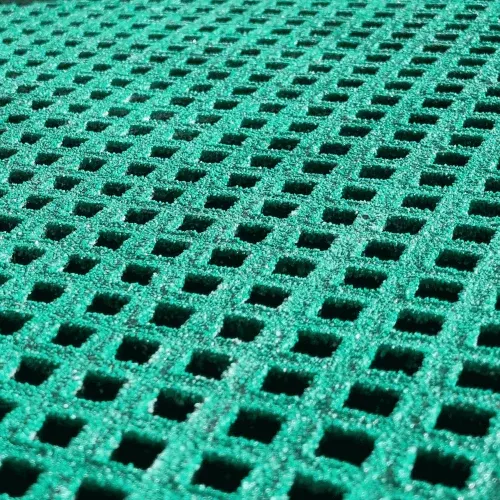loading...
- No. 9, Xingyuan South Street, Dongwaihuan Road, Zaoqiang County, Hengshui, Hebei, China
- admin@zjcomposites.com
- +86 15097380338
- Welcome to visit our website!
frp steel structure
The Role of FRP in Steel Structures A Comprehensive Overview
Fiber Reinforced Polymer (FRP) composites have emerged as a revolutionary material in the field of construction and engineering, specifically in applications involving steel structures. As the demand for more efficient, durable, and sustainable building materials continues to rise, FRP offers a range of advantages that can enhance the performance and longevity of steel structures. This article explores the unique properties of FRP, its integration with steel structures, and the benefits it brings to modern construction practices.
Understanding FRP
FRP is a composite material made of a polymer matrix reinforced with fibers, which can be made of glass, carbon, aramid, or other materials. The resulting composite is lightweight yet incredibly strong, making it an ideal choice for a variety of engineering applications. FRP is also resistant to corrosion, chemicals, and extreme weather conditions, further adding to its appeal for use in steel structures, which are often susceptible to deterioration due to these factors.
Integration of FRP and Steel Structures
Incorporating FRP into steel structures can take many forms, including the use of FRP reinforcements in concrete embedded in steel frames, FRP wraps for strengthening existing steel elements, and even the production of hybrid composite-steel members. The combination of the lightweight nature of FRP with the strength of steel can create structures that are not only robust but also more efficient in terms of material usage.
One of the leading applications of FRP in steel structures is in seismic retrofitting. Older steel buildings, which may not conform to current seismic codes, can benefit from the tensile strength and flexibility of FRP composites. By wrapping steel columns or beams with FRP, engineers can significantly improve the structure's ability to withstand lateral forces during an earthquake. This upgrading approach not only enhances safety but also prolongs the life of the building.
Benefits of Using FRP in Steel Structures
1. Corrosion Resistance One of the most significant advantages of using FRP in conjunction with steel is the mitigation of corrosion. Steel structures exposed to moisture, pollution, and other environmental factors are prone to rust. FRP coatings or wraps can provide a protective barrier that prevents corrosive agents from reaching the steel, thereby extending the lifespan of the structure.
frp steel structure

2. Weight Savings The lightweight properties of FRP mean that structures can be designed using less material without compromising strength. This weight reduction leads to lower transportation costs and easier handling during construction, allowing for faster project completion.
3. Enhanced Strength and Stiffness When strategically applied, FRP can significantly increase the strength and stiffness of steel components. This enhancement is particularly beneficial in applications where additional load capacity is required, such as bridges or high-rise buildings.
4. Durability FRP composites are known for their long-term durability, which is essential in reducing maintenance costs over the life of a structure. Their resilience against environmental degradation and fatigue makes them an optimal choice for critical infrastructure.
5. Design Flexibility FRP can be molded into various shapes and sizes, providing architects and engineers with the creative freedom to design complex structures that may be difficult to achieve with traditional materials. This flexibility can lead to innovative architectural solutions that are both functional and aesthetically pleasing.
Challenges and Considerations
Despite the numerous benefits, the use of FRP in steel structures is not without its challenges. The initial cost of FRP materials can be higher than traditional materials, which may deter some investors. Additionally, the long-term performance of FRP in specific environments is still being studied, and ongoing research is essential to fully understand its capabilities.
Conclusion
FRP has carved out a vital niche in the realm of steel structures, offering enhancements in performance, durability, and sustainability. As technology advances and the industry continues to explore the potential applications of FRP, its integration alongside traditional materials may pave the way for a new era in construction. By understanding and leveraging the unique properties of FRP, engineers and architects can design safer, more efficient, and enduring structures that meet the challenges of the modern world. The future of construction lies in the collaboration and innovation of materials, and FRP is poised to play a significant role in that evolution.
-
The Rise of FRP Profiles: Strong, Lightweight, and Built to LastNewsJul.14,2025
-
SMC Panel Tanks: A Modern Water Storage Solution for All EnvironmentsNewsJul.14,2025
-
GRP Grating: A Modern Solution for Safe and Durable Access SystemsNewsJul.14,2025
-
Galvanized Steel Water Tanks: Durable, Reliable, and Ready for UseNewsJul.14,2025
-
FRP Mini Mesh Grating: The Safer, Smarter Flooring SolutionNewsJul.14,2025
-
Exploring FRP Vessels: Durable Solutions for Modern Fluid HandlingNewsJul.14,2025
-
GRP Structures: The Future of Lightweight, High-Performance EngineeringNewsJun.20,2025
